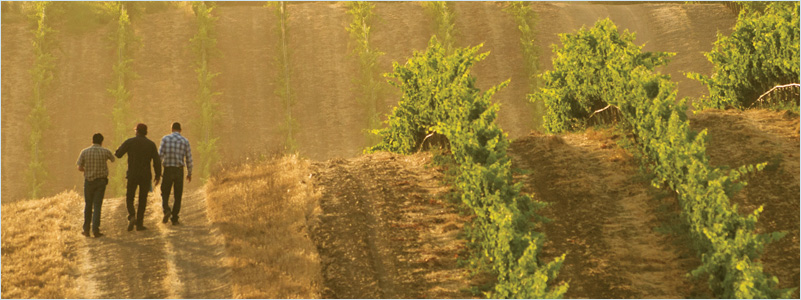

Recently, I shared a train ride into Manhattan with a friend, Keven Clancy. We had, by chance, both been on the same flight from San Francisco to Newark, seated a few rows apart. Clancy is a partner in Farm Wine Imports in San Francisco and was headed to New York City to meet with associates at Louis/Dressner, whose wines he sells on the west coast.
As the early-morning train rocked over the wetlands toward Secaucus, I mentioned how this was once a huge oyster bed. When the Dutch sailed into the Hudson River harbor, they found tall piles of oyster shells on the banks of estuaries to the west, what we now call the Meadowlands. Those oysters were a staple of the local American diet.
Funny, I said, how people settle first into the most beautiful places, only to pave them over. In the last 350 years, we have created a magnificent city where the Hudson meets the sea, much of it a world apart from the land that was here when we started.
As humans, we have a curious relationship with the earth. Some of us consume it and move on. Others tend it and rely, for their own survival, on the bounty it may or may not yield. There are people sustained by that connection to a place, and others who prefer no connection at all.
Our team at Wine & Spirits shares one thing in common: We’re fascinated by the connections people make with the land they farm. The wines we covet are the ones that register those connections. Last year, our Fall issue focused on the physical aspects of site expression—how the character of wine might be different from one soil and climate to another.
This year, we are looking at the influence of people on terroir expression—not specifically at their relationship to their vineyards, but rather the cultural distinctions that make their wines taste of where they are grown. Those distinctions are often reflected in both the wine and the food of a place.
Our goal with this issue is to strip away some of the noise and consider what is original in a wine region: how a farmers’ market might take root in Napa, or how that city’s Italian heritage, layered below the cult cabernets and the prix fixe restaurants, might appear in a bowl of takeout pasta from the local liquor store. We’ve tried to get past the glistening cultural iconography of some famous places and show you some of the reality, to give you a sense of wine regions through the people who live and work there.
For us, the project has provided a deeper understanding of how the wines of these places come to taste as they do—as well as a list of great places to check out on our next visit to these wine towns. We’re excited to share that with you.


This story appears in the print issue of Fall 2013.
Like what you read? Subscribe today.















